Puppy obedience training
Can a well-behaved puppy change your life? Puppy obedience training is more than just learning tricks. It’s about making a strong bond with your pet for life. We’ll look into the basics and advanced ways to train your puppy.
Training starts when your puppy is about six to seven weeks old1. This is when they’re most ready to learn new things and start good habits. Training should be short, lasting 10 to 15 minutes, and done two to three times a day1.
The Monadnock Humane Society Training Center offers many classes2. You can find Puppy Kindergarten to advanced classes like Agility and Rally Obedience. These classes teach important skills and behaviors using rewards. They help make a strong bond between you and your dog2.
Being consistent in training is very important. Short training sessions throughout the day work better than one long one3. This keeps your puppy interested and helps them learn better.
Understanding the Importance of Puppy Obedience Training
Puppy training is key to having a well-behaved and happy dog. It helps build a strong bond with your furry friend. Let’s see why obedience training is so important for puppies.
Building Trust and Communication
Training your puppy helps build trust and opens communication. By teaching them eight key behaviors like saying their name and sitting, you create a common language4. This makes your relationship stronger and everyday life easier.
Establishing Good Behavior Patterns
Training your puppy consistently teaches them what’s right. Short, fun training sessions of 10-15 minutes, three times a day, keep your puppy’s focus4. Positive reinforcement training encourages good habits from the start.
Mental Stimulation for Your Puppy
Obedience training gives your puppy mental exercise. Using puzzle toys and training in different places keeps them engaged and learning4. This mental work is as important as physical exercise for a growing puppy.
Remember, be patient with your puppy. Celebrate their small wins and use tasty treats as rewards4. With effort and the right methods, you’ll soon have a well-behaved dog who knows basic commands.
When to Start Training Your Puppy
Start training your puppy as soon as you bring it home. The best time is between 8 to 10 weeks old. Puppies learn best during this time56. Focus on basic commands and getting your puppy used to different things.
Use short, fun training sessions. Aim for five minutes each, for a total of 15 minutes a day5. This keeps your puppy interested and doesn’t overwhelm them.
Teach commands like “sit,” “stay,” and “come” early56. These are important for obedience and talking with your puppy. Use treats and praise to make training fun.
It’s important to socialize your puppy early. Start showing them to people, animals, and new places at 8 weeks old5. This helps them grow into happy dogs. Think about joining puppy classes that start at 8 weeks and can lead to a special certification7.
| Age | Training Focus | Key Activities |
|---|---|---|
| 7-8 weeks | Basic cues, handling | Name recognition, leash introduction |
| 8-10 weeks | Crate training, potty training | Positive crate association, consistent schedule |
| 10-12 weeks | Bite inhibition, advanced commands | Redirecting chewing, introducing “place” and “down” |
| 12-16 weeks | Formal training classes, socialization | AKC STAR Puppy program, interaction with calm dogs |
Puppy training takes time, up to 2-3 years5. Be patient, stay positive, and keep training to help your puppy become a good adult dog.
Essential Equipment for Puppy Training
Having the right puppy training gear is key for good obedience training. We’ll look at the top items you need to get your puppy ready for training.
Treat Pouches and Training Treats
A treat pouch is a must-have for easy access to rewards during training. It helps you reward your puppy right away8. For training at home, a simple silicone pouch is good. But, for outdoor training, a bag with many pockets is better9.
Small, tasty treats are perfect for rewarding your puppy. They keep your puppy happy and focused during training10.
Leashes and Harnesses
A 6-foot leash is great for walks and training10. For training without a leash, try an adjustable leash that keeps you close to your puppy9. Don’t use retractable leashes for training8.
Choose a harness that’s comfy and easy to adjust. Some trainers like head halters or limited slip collars for better control9.
Puzzle Toys for Mental Stimulation
Puzzle toys do two things in puppy training. They keep your puppy’s mind busy and slow down eating, making meals fun10. Toys that make your puppy work for treats, like Kongs, are great for keeping them happy and smart8.
| Equipment | Purpose | Recommended Type |
|---|---|---|
| Treat Pouch | Quick treat access | Silicone or multi-compartment |
| Leash | Control during walks | 6-foot, non-retractable |
| Harness | Comfortable restraint | Adjustable, easy-to-apply |
| Puzzle Toy | Mental stimulation | Treat-dispensing toys |
Buying good puppy training gear is key for leash training and obedience. With the right tools, training will be more fun and effective for you and your puppy.
Basic Commands Every Puppy Should Learn
Puppy training is key to having a well-behaved dog. We’ll look at basic obedience commands that are important for your puppy. These commands help manage your pet and make your bond stronger.
Start with simple commands early in puppy training. Puppies can start learning at 8 weeks old. Training should be short, lasting 5 to 10 minutes11. This keeps your puppy focused and stops them from getting overwhelmed.
Every puppy should learn five basic commands: “come”, “lay down”, “sit”, “stay”, and “leave it”12. “Sit” is usually the first command puppies learn. With practice, many can learn it in a few hours12.
Positive reinforcement is the best way to teach these commands. Use treats, praise, or play as rewards when your puppy does something right1112. This makes your puppy want to do the behavior again.
- Start teaching “come” in a quiet, indoor area to avoid distractions11.
- For “stay”, use a release word and slowly increase the distance and time11.
- “Leave it” helps your puppy not to be curious and teaches self-control12.
Patience is key in puppy training. It might take a few tries for your puppy to get each command12. Being consistent in your training will give the best results. It will help build a strong foundation for your puppy’s obedience.
Positive Reinforcement Techniques in Puppy Training
Puppy training can be fun and rewarding with the right approach. Positive reinforcement is the best way to teach our pets. It rewards good actions instead of punishing bad ones13.
The Power of Rewards
Rewards are key in positive reinforcement training. We use treats, praise, petting, or a favorite toy to encourage good behavior. It’s important to give rewards right after the good action to help them connect the action with the reward1314.
Small, low-calorie treats are great for training. Or, we can use cut-up veggies or fruits like carrots, apples, or blueberries for a healthy option13.
Consistency in Training Approach
Being consistent is very important in training a puppy. We make sure everyone in the family uses the same commands and rewards. This avoids confusing our puppy. Common commands include “sit,” “stay,” “down,” and “come.”14
Clicker training with positive reinforcement works well too. The clicker helps mark good behavior faster than just using words13.
Avoiding Punishment-Based Methods
We don’t use punishment in training. Punishing a puppy can make them scared, mean, or anxious. It can also hurt the bond between dog and owner13.
Instead, we focus on rewarding good actions. Techniques like “shaping” help build up to the behavior we want14.
Training sessions should be short, about 10 minutes, to keep your puppy’s focus. With patience and positive reinforcement, your puppy will learn and grow fast.
Socialization: A Key Component of Puppy Obedience Training
Socializing your puppy is key to their training and happiness. It helps them grow into confident adults. Start this early, between 3 and 14 weeks old15.
Puppies that get socialized well don’t often have bad behaviors like being mean or scared. Most dogs under 3 years old die from behavior issues, not diseases1617.
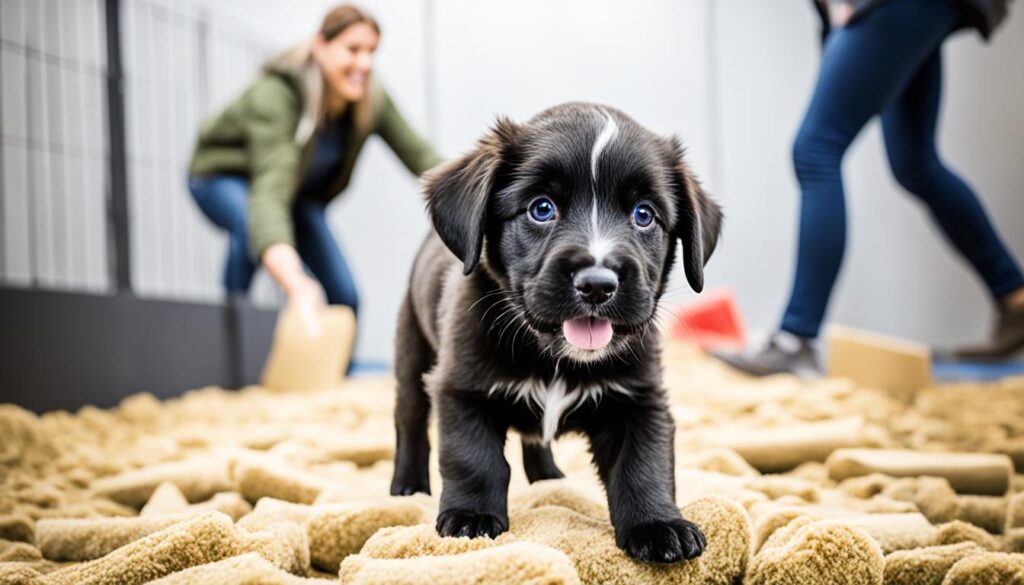
Make sure your puppy meets new people, animals, and places often15. This helps them get used to new things. Use treats and praise to make these experiences good ones.
Benefits of Early Socialization
- Improved confidence and social skills
- Reduced likelihood of fear-based behaviors
- Enhanced ability to adapt to new situations
- Stronger bonds with humans and other animals
Puppy socialization classes are great for teaching your dog how to be social safely15. They also help with basic obedience. The AKC S.T.A.R. Puppy program lets dogs up to 1 year old get a title by taking a six-week class and passing a test16.
Focus on socializing your puppy early and keep it up. This will help your dog be well-behaved, confident, and friendly as an adult.
Common Challenges in Puppy Training and How to Overcome Them
Raising a puppy comes with its ups and downs. We’ll look at common issues and share tips to help you. These tips will make your journey with your puppy fun and rewarding.
Dealing with Short Attention Spans
Puppies can’t focus for long. Keep training short, 10-20 minutes for simple commands. Do come commands for 20+ times a day18. This helps your puppy learn without getting too tired.
Managing Distractions During Training
Distractions can throw off a puppy’s focus. Start training in a quiet place and slowly add distractions. Puppies go through fear periods at 8-11 weeks and 6-14 months. This can change their behavior19. Be patient and adjust your training as needed.
Addressing Stubborn Behavior
Stubborn puppies need patience. Issues like jumping up, not coming when called, and pulling on the leash are common20. These problems can start young and last a lifetime if not fixed early20. Being consistent is the key to solving these issues.
| Behavior | Cause | Solution |
|---|---|---|
| Jumping up | Face-to-face greeting instinct | Teach alternative behaviors like sitting or hand-targeting |
| Not coming when called | Lack of positive association | Use rewards like treats, toys, or playtime |
| Leash pulling | Oppositional reflex and learned behavior | Use front-clip harnesses, stop walking when leash is tight |
Housebreaking and crate training are key parts of puppy training. They can take weeks or months to get right19. If you’re having trouble, don’t be afraid to get help from a pro dog trainer.
Advanced Obedience Training for Puppies
Once your puppy knows basic commands, it’s time for more. These skills keep their minds sharp and make your bond stronger. Let’s look at some exercises that will challenge your puppy.
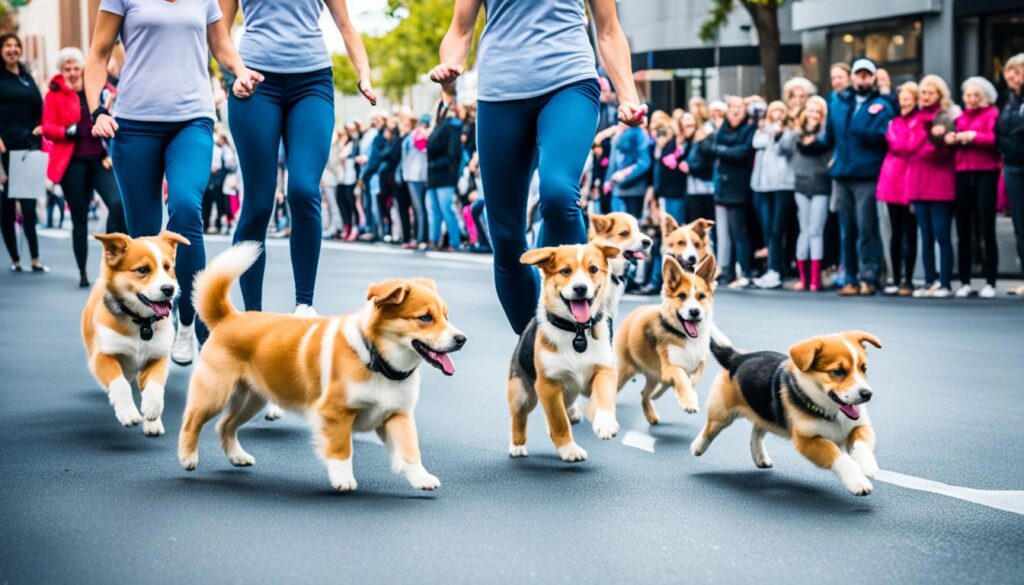
Advanced training includes things like formal heeling and staying still for a long time. Puppies that are 5 months or older can start these exercises21. Many trainers use different commands in their programs. For example, 49% teach dogs to find things, and 60% teach them to open and close doors22.
Here’s a look at basic and advanced commands:
| Basic Commands | Advanced Commands |
|---|---|
| Sit | Extended Distance Obedience |
| Stay | Formal Heel |
| Come | “Watch” Command |
| Down | “Through” Command |
| Leave It | “Front” Command |
Advanced training usually takes about 8 weeks. These programs often include private lessons for advanced obedience21. Also, 75% of trainers use play to keep puppies’ minds and bodies sharp22.
Being consistent is important in training your puppy. Add new skills slowly, building on what they already know. With patience and practice, your puppy will learn these advanced skills.
Integrating Obedience Training into Daily Life
We can add puppy training to our daily life. Mixing up rewards keeps dogs interested in learning23. This makes training fun and effective. Aim for 25 minutes of focused training each day24.
Training can be fun and useful. Teach your dog to “wait” before eating or getting into the car. These skills make life safer and easier24. Adding tricks like “Paw” or “Spin” keeps training fun and helps their minds25.
Positive reinforcement is key in daily training. Practice recalls and have your dog stay on their bed during meals24. This strengthens your bond and makes walks better. If you’re busy, interactive toys can keep your dog sharp25. Consistent training leads to happy, well-behaved dogs.
FAQ
Why is puppy obedience training important?
When should I start training my puppy?
What equipment do I need for puppy training?
What are the basic commands every puppy should learn?
How can I use positive reinforcement in puppy training?
Why is socialization important for puppies?
How can I overcome common puppy training challenges?
What advanced obedience training can I do with my puppy?
How can I integrate obedience training into my puppy’s daily routine?
Source Links
- https://www.thesprucepets.com/start-dog-obedience-training-program-1118245 – Do-It-Yourself Dog Training Program
- https://monadnockhumanesociety.org/dog-training/ – Dog Training Programs – Monadnock Humane Society
- https://www.thesprucepets.com/steps-to-train-your-dog-1118273 – Dog Training 101: An Ultimate Guide to Fixing Common Behavior Issues
- https://zigzag.dog/en-us/blog/puppy-training/training-basics/puppy-obedience-training-guide/ – Puppy Obedience Training: The Easy 8-Week Guide | Zigzag
- https://www.petmd.com/dog/general-health/when-start-training-puppy – How To Start Training Your Puppy
- https://www.thepuppyacademy.com/blog/2020/8/24/complete-puppy-training-schedule-by-age – Complete Puppy Training Schedule by Age! — The Puppy Academy
- https://www.akc.org/expert-advice/training/basic-obedience-training-for-your-dog/ – No title found
- https://www.thesprucepets.com/must-have-dog-training-supplies-1118277 – Must-Have Dog Training Supplies
- https://ellasanimals.org/public-access-training/my-favorite-equipment-for-dog-training/ – My Favorite Equipment for Dog Training – ELLAS Animals INC
- https://ruffacademywi.com/the-essential-guide-to-dog-training-equipment/ – The Essential Guide to Dog Training Equipment
- https://www.akc.org/expert-advice/training/teach-your-puppy-these-5-basic-commands/ – No title found
- https://www.petlandflorida.com/how-to-teach-your-puppy-the-5-basic-commands/ – How to Teach Your Puppy The 5 Basic Commands
- https://www.smalldoorvet.com/learning-center/puppies-kittens/positive-reinforcement-training/ – Puppy 101: Positive Reinforcement Dog Training
- https://www.humanesociety.org/resources/positive-reinforcement-training – Positive reinforcement training
- https://vcahospitals.com/know-your-pet/puppy-behavior-and-training—socialization-and-fear-prevention – Puppy Behavior and Training – Socialization and Fear Prevention | VCA Animal Hospitals
- https://www.akc.org/expert-advice/training/puppy-socialization/ – No title found
- https://www.ncbi.nlm.nih.gov/pmc/articles/PMC6067676/ – Puppy parties and beyond: the role of early age socialization practices on adult dog behavior
- https://petbotanics.com/new-puppy-tips-obedience-common-behaviors-and-house-training/ – Obedience, Common Behaviors and House Training – Pet Botanics
- https://ridgesidek9.com/5-biggest-dog-training-challenges/ – The 5 Biggest Dog Training Challenges Every Pet Owner Faces
- https://www.vetstreet.com/our-pet-experts/the-3-most-common-dog-training-problems-and-how-to-fix-them – The 3 Most Common Dog Training Problems and How to Fix Them – Vetstreet
- https://offleashgeorgia.com/product/basic-and-advanced/ – Beyond Basic + Advanced Obedience | Off Leash K9 Training, Georgia
- https://www.dogseechew.in/blog/20-essential-dog-training-commands-orders-list-basic-to-advanced – 20 Essential Dog Training Commands – (Basic to Advanced) | Dogsee
- https://www.psychologytoday.com/us/blog/fellow-creatures/201912/ten-tips-integrate-dog-training-everyday-life – Ten Tips to Integrate Dog Training Into Everyday Life
- https://calvinthecanine.com/2019/08/02/5-ways-to-incorporate-dog-training-into-your-daily-life/ – Easy Dog Training: 5 ways to incorporate training into your daily life
- https://www.gcdogtraining.com/integrating-training-into-your-daily-routine/ – Integrating Training Into Your Daily Routine | Gulf Coast K9 Dog Training
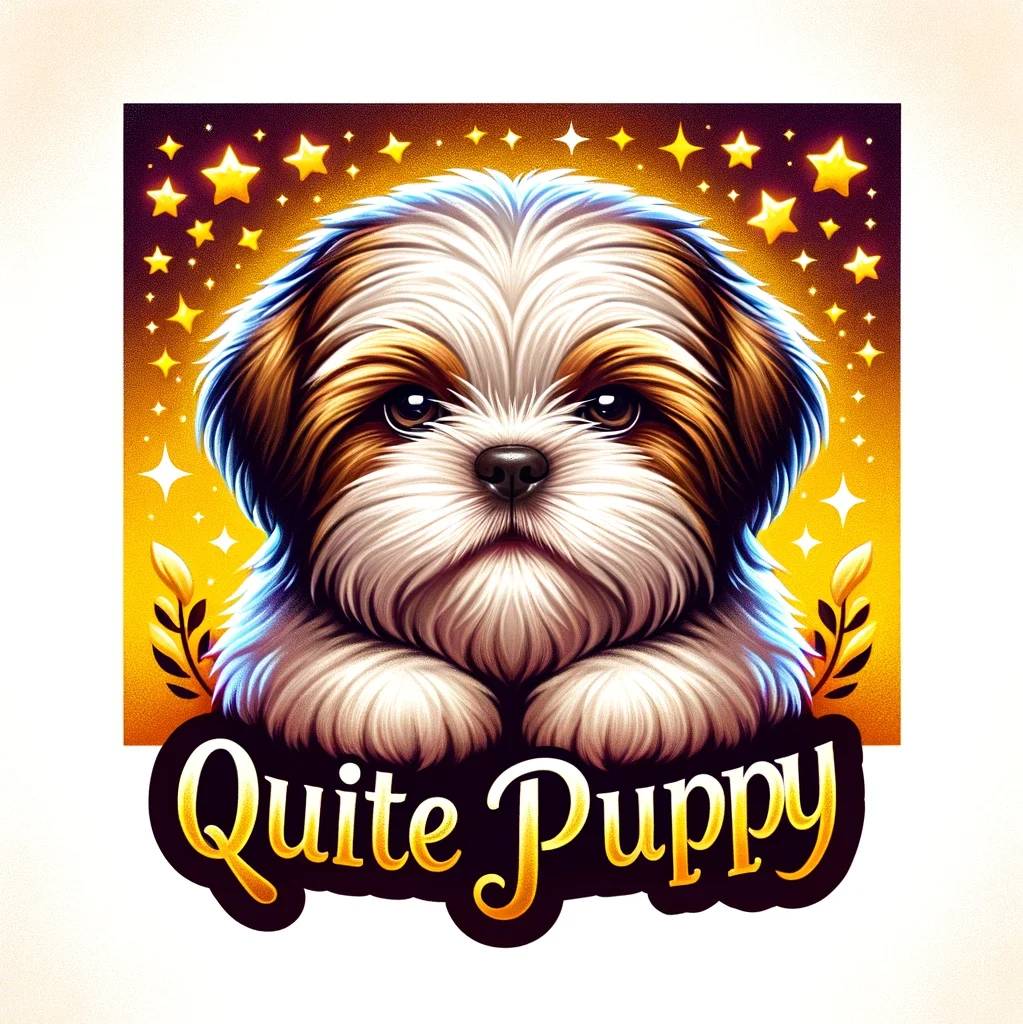
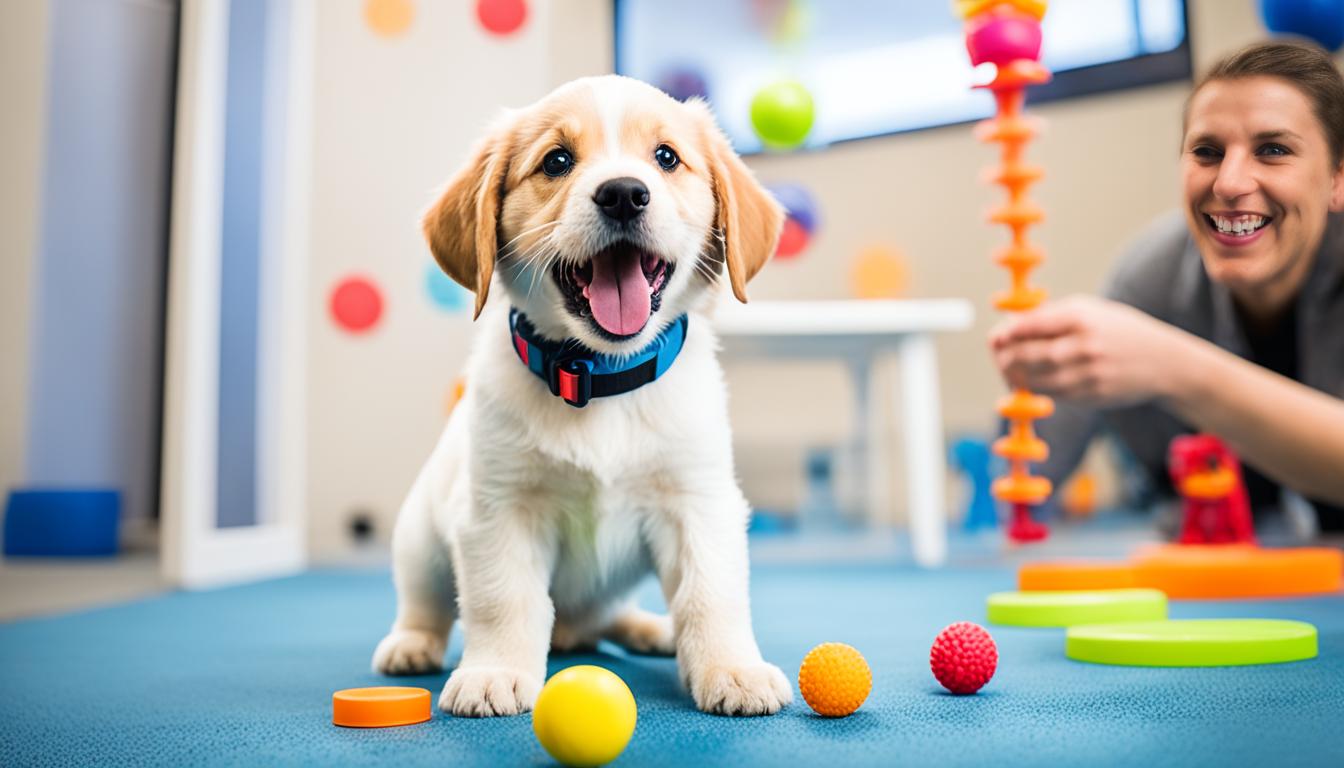
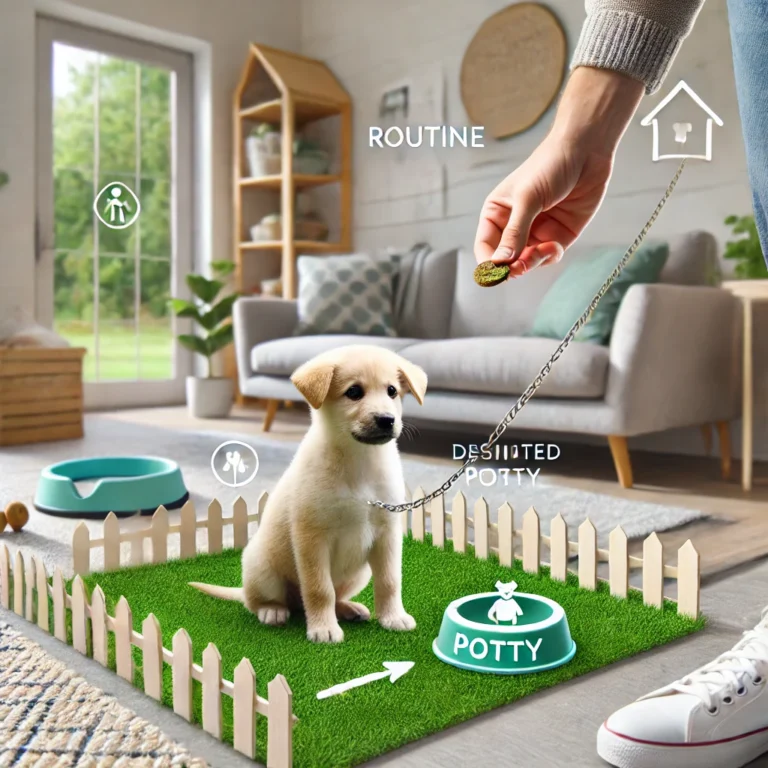
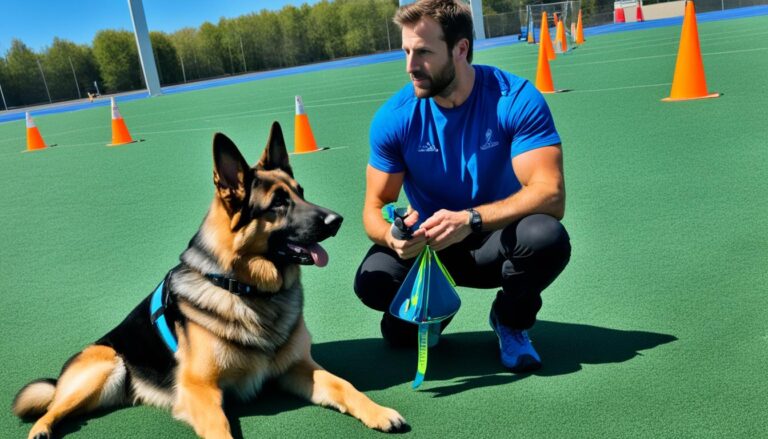
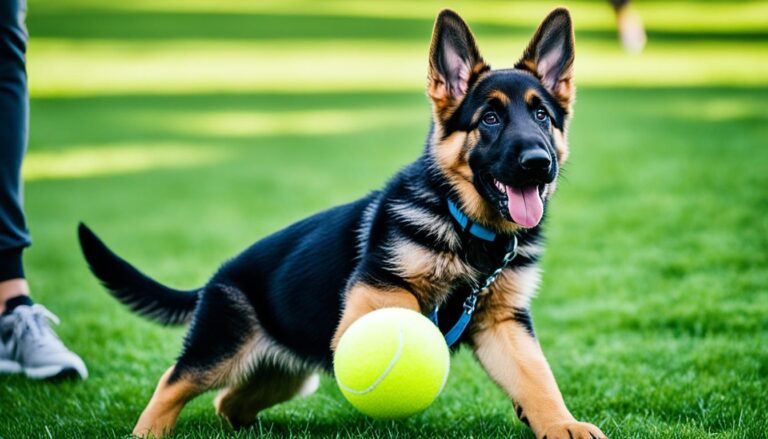
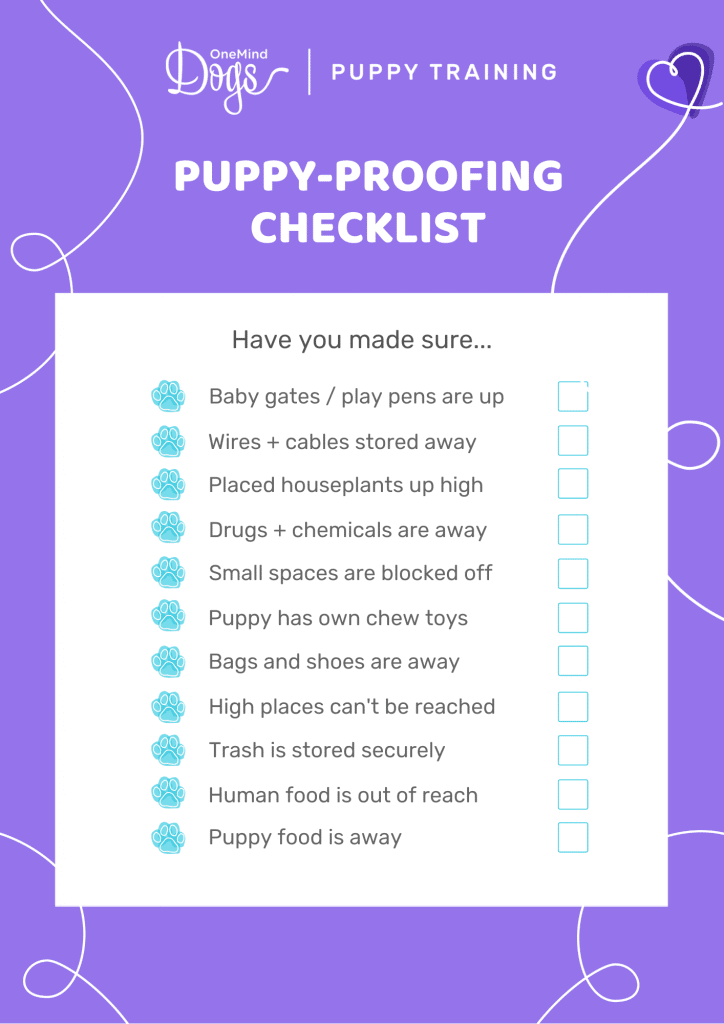
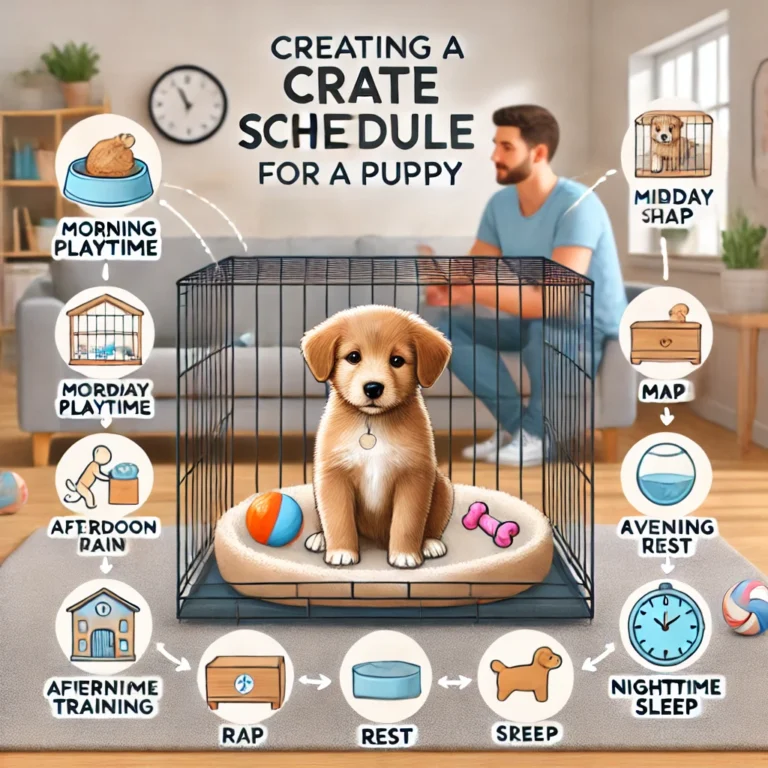
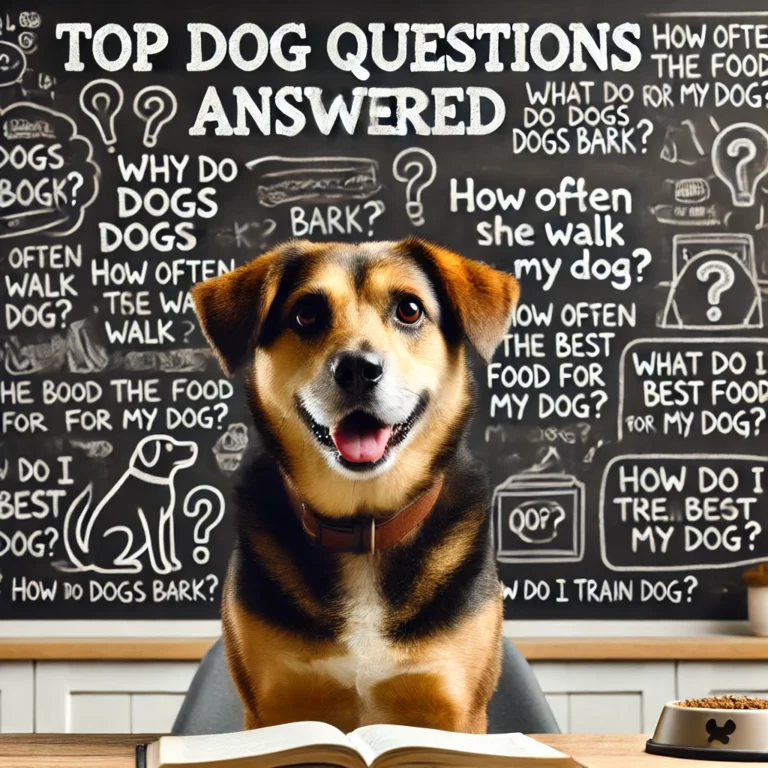
One Comment